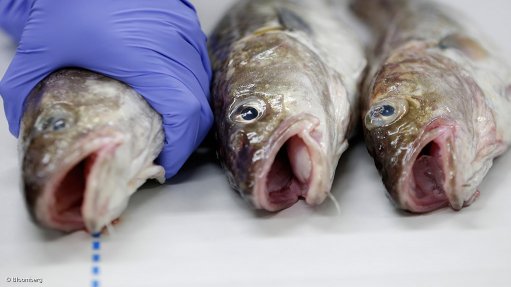
Photo by: Bloomberg
The Namibian Ministry of Fisheries and Marine Resources (MFMR) has warned that illegal fishers stationed alongside Namibia’s 140-km-long Zambezi River border, which it shares with Zambia, are bleeding revenue from the country’s fishing industry.
Speaking from Namibia’s capital, Windhoek, the MFMA spokesperson, De Wet Siluka told ANA that dealers harvested and illegally exported at least 500 t of fish each year to lucrative fish markets in Zambia and the Democratic Republic of Congo (DRC).
Siluka said that this illegal, unrecorded and unregulated fish trade has resulted in a loss of revenue for the country as hundreds of illegal fishermen from Zambia and the DRC had taken advantage of weak border controls to set up illegal camps and fishing rigs along the 140 km border stretch along the Zambezi floodplain.
“The major problem is that while 80% of the Zambezi floodplains are in Namibia, there are more Zambian fishermen who set up temporary, though illegal, fishing camps on Namibian soil when the annual floods subside. Almost all their catches are sold in Zambia and the DRC,” Siluka said.
Namibia, he said, was concerned about foreigner’s over-exploitation of the country’s fish resources as they have taken advantage of the government’s inability to monitor the trade and were using dragnets to target various bream fish species. These fish species are then sold at high prices at fish markets in Zambia and the DRC.
“The monitoring teams are handicapped by the conditions in which they have to work as most of the illegal activities take place at night over the entire 140km of the Zambezi floodplain which separates the two countries. The government cannot sustain the salaries and allowances of staff who go on such field patrols,” Siluka said.
The bream fish species which the illegal fishers have targeted include three-spot tilapia, red-breast tilapia, green-head tilapia and catfish which are exported in fresh, dried, salted and smoked form.